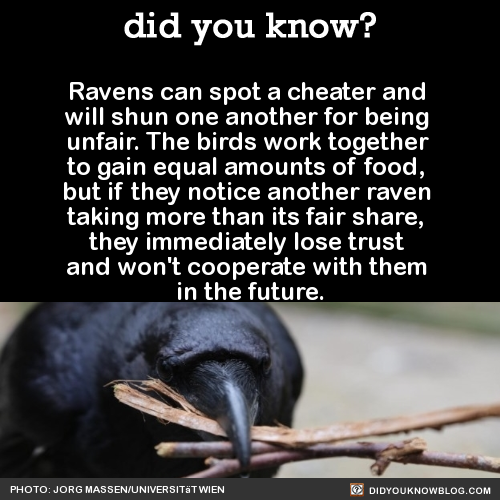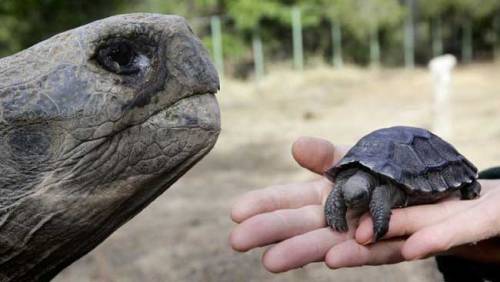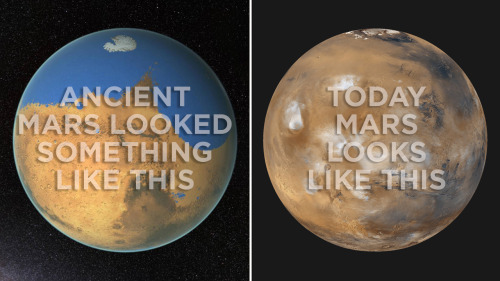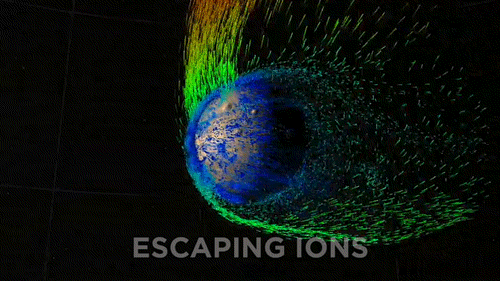When A Flower Doesn’t Bloom You Fix The Environment In Which It Grows, Not The Flower.
When a flower doesn’t bloom you fix the environment in which it grows, not the flower.
(via ociz)
More Posts from Dotmpotter and Others

Today I am drawing Christmas card designs. For robots. #christmascard #christmas #xmas #merrychristmas #robot #robotart #art #illustration #instaartist #instaart #jonturner

In an experiment, two ravens had to simultaneously pull the two ends of one rope to slide a platform with two pieces of cheese into reach. If only one of them pulled, the rope would slip through the loops, leaving them with no cheese. Without any training they solved the task and cooperated successfully.

However, when one of the two birds cheated and stole the reward of its companion, the victims of such cheats immediately noticed and started defecting in further trials with the same individual.

“Such a sophisticated way of keeping your partner in check has previously only been shown in humans and chimpanzees, and is a complete novelty among birds.”

Source
Can an army of voluntary "mappers" (like you) help end child slavery on Lake Volta, Ghana?



LEARN MORE about being a “mapper” here.
Consider a 100% tax-deductible DONATION to free a child from slavery on Lake Volta here: madeinafreeworld.com/ghana
Amazing Maps of the World

A Merry-Go-Round That Turns The Power Of Play Into Electricity - Vlad Vilenski posted in Green, Electricity and Non Profit
Empower Playgrounds is a nonprofit that has come up with an intriguing solution: Harnessing the power of play, it provides merry-go-rounds to schools in Ghana that generate and store electricity as they are spun around, even while teeming with laughing and smiling kids.
Continue to fastcodesign.com

Baby Tortoises Show Up In The Galapagos For The First Time In Over A Century
There hadn’t been one single baby tortoise sighting in more than a century on the Galapagos Island of Pinzon, until a small group of the tiny, shelled youngsters were spotted this year.
The recent births are helping to pull the critically endangered animals back from the brink of extinction after they were nearly laid to waste as a result of human activity.
This is huge news for a species that has been struggling to survive for a century, relying on humans raising young tortoises bred in captivity until they are large enough to not fall prey to rats and predators.




The Moon Parka - A jacket made of synthetic spider silk
Remember the Japanese biomaterials company Spiber? In 2013, they presented a cocktail dress made of Qmonos (from the Japanese word kumonosu meaning ‘spider web’), their present 11-year-10-design-iterations-and-656-gene-synthesis synthetic version of stronger than steel and more flexible than nylon lightweight spider silk.
Snip from geek.com:
The end result of all that research is a method for producing artificial spider silk through a fermentation process using bioengineered microorganisms to produce the silk proteins. A real spider can only produce so much silk, but an engineered cell that does nothing but spit out silk proteins can be used to scale production up quickly.
Now they presented in collaboration with The North Face a new prototype called The Moon Parka, which is currently touring North Face stores across Japan. It’s intended to show that practical applications of spider silk are possible (cost is now 1/53,000 of what it was in 2008). Spiber aims to deliver the final product next year. Presumably only in Japan. But fingers crossed for a worldwide rollout at reasonable prices.
Watch their promo-launch video below:
[North Face x Spiber] [Spiber] [picture by North Face]




Ancient Mars had a thick atmosphere filled with carbon dioxide that kept it warm. Rivers trickled into lakes across its surface. Some researchers think there might even have been an ocean. It looked a lot like ancient Earth.
But Mars doesn’t have Earth’s magnetic field, and that has made all the difference. Our magnetic field blocks solar wind - the high energy particles emitted by the sun.
Thanks to new data from the Mars Atmosphere and Volatile Evolution Mission (MAVEN) we know that this solar wind has been assaulting Mars for centuries, and as a result its atmosphere is constantly leaking into space.
Read more here!

Energy conversion: Speeding up material discovery
Algorithm take months, not years, to find material for improved energy conversion
In even the most fuel-efficient cars, about 60 percent of the total energy of gasoline is lost through heat in the exhaust pipe and radiator. To combat this, researchers are developing new thermoelectic materials that can convert heat into electricity. These semiconducting materials could recirculate electricity back into the vehicle and improve fuel efficiency by up to 5 percent.
The challenge is, current thermoelectric materials for waste heat recovery are very expensive and time consuming to develop. One of the state of the art materials, made from a combination of hafnium and zirconium (elements most commonly used in nuclear reactors), took 15 years from its initial discovery to optimized performance.
Now, researchers from the Harvard John A. Paulson School of Engineering and Applied Sciences (SEAS) have developed an algorithm that can discover and optimize these materials in a matter of months, relying on solving quantum mechanical equations, without any experimental input.
“These thermoelectric systems are very complicated,” said Boris Kozinsky, a recently appointed Associate Professor of Computational Materials Science at SEAS and senior author of the paper. “Semiconducting materials need to have very specific properties to work in this system, including high electrical conductivity, high thermopower, and low thermal conductivity, so that all that heat gets converted into electricity. Our goal was to find a new material that satisfies all the important properties for thermoelectric conversion while at the same time being stable and cheap.”
Read more.

-
 healo liked this · 1 week ago
healo liked this · 1 week ago -
 flawvy liked this · 1 week ago
flawvy liked this · 1 week ago -
 mina-kami reblogged this · 1 week ago
mina-kami reblogged this · 1 week ago -
 k-mxe liked this · 1 week ago
k-mxe liked this · 1 week ago -
 strawberries-n-thc liked this · 1 week ago
strawberries-n-thc liked this · 1 week ago -
 omgherbalicious reblogged this · 1 week ago
omgherbalicious reblogged this · 1 week ago -
 peachbasquiat liked this · 2 weeks ago
peachbasquiat liked this · 2 weeks ago -
 kristin-athena liked this · 2 weeks ago
kristin-athena liked this · 2 weeks ago -
 driftwo-od reblogged this · 2 weeks ago
driftwo-od reblogged this · 2 weeks ago -
 4evereterniti liked this · 2 weeks ago
4evereterniti liked this · 2 weeks ago -
 astarboundtoabody reblogged this · 2 weeks ago
astarboundtoabody reblogged this · 2 weeks ago -
 astarboundtoabody liked this · 2 weeks ago
astarboundtoabody liked this · 2 weeks ago -
 sinatao1 liked this · 2 weeks ago
sinatao1 liked this · 2 weeks ago -
 artattackk reblogged this · 2 weeks ago
artattackk reblogged this · 2 weeks ago -
 artattackk liked this · 2 weeks ago
artattackk liked this · 2 weeks ago -
 slumsaintt reblogged this · 2 weeks ago
slumsaintt reblogged this · 2 weeks ago -
 gayearlgrey reblogged this · 3 weeks ago
gayearlgrey reblogged this · 3 weeks ago -
 aquameme reblogged this · 1 month ago
aquameme reblogged this · 1 month ago -
 sensitivesol liked this · 1 month ago
sensitivesol liked this · 1 month ago -
 eff-ston3mblogs reblogged this · 1 month ago
eff-ston3mblogs reblogged this · 1 month ago -
 eff-ston3m liked this · 1 month ago
eff-ston3m liked this · 1 month ago -
 illiana-kovalenka reblogged this · 1 month ago
illiana-kovalenka reblogged this · 1 month ago -
 illiana-kovalenka liked this · 1 month ago
illiana-kovalenka liked this · 1 month ago -
 mindfuckeddd liked this · 2 months ago
mindfuckeddd liked this · 2 months ago -
 moonshadow25 liked this · 2 months ago
moonshadow25 liked this · 2 months ago -
 princessclefairyberry liked this · 2 months ago
princessclefairyberry liked this · 2 months ago -
 hes-a-rat-in-a-hat reblogged this · 3 months ago
hes-a-rat-in-a-hat reblogged this · 3 months ago -
 nocturnalr4ven liked this · 3 months ago
nocturnalr4ven liked this · 3 months ago -
 bugcultist reblogged this · 3 months ago
bugcultist reblogged this · 3 months ago -
 bourbon-moon liked this · 3 months ago
bourbon-moon liked this · 3 months ago -
 fl3eting reblogged this · 3 months ago
fl3eting reblogged this · 3 months ago -
 isolatedgirl liked this · 3 months ago
isolatedgirl liked this · 3 months ago -
 kawaiidesu reblogged this · 3 months ago
kawaiidesu reblogged this · 3 months ago -
 kawaiidesu liked this · 3 months ago
kawaiidesu liked this · 3 months ago -
 diqueku liked this · 4 months ago
diqueku liked this · 4 months ago -
 nirvanafox3000 liked this · 4 months ago
nirvanafox3000 liked this · 4 months ago -
 kre8ivebudz liked this · 4 months ago
kre8ivebudz liked this · 4 months ago -
 neilsjostvn reblogged this · 4 months ago
neilsjostvn reblogged this · 4 months ago -
 peanutbuttercelery reblogged this · 4 months ago
peanutbuttercelery reblogged this · 4 months ago -
 coolkidsrecreating reblogged this · 4 months ago
coolkidsrecreating reblogged this · 4 months ago -
 seemythoughtsandfantasies liked this · 4 months ago
seemythoughtsandfantasies liked this · 4 months ago -
 aint-that-kind-of-blog-bruv reblogged this · 4 months ago
aint-that-kind-of-blog-bruv reblogged this · 4 months ago -
 pahanatheshaman liked this · 4 months ago
pahanatheshaman liked this · 4 months ago -
 avisaspie liked this · 4 months ago
avisaspie liked this · 4 months ago -
 freshdanks reblogged this · 5 months ago
freshdanks reblogged this · 5 months ago -
 rauhassa reblogged this · 5 months ago
rauhassa reblogged this · 5 months ago -
 coolkidsrecreating reblogged this · 5 months ago
coolkidsrecreating reblogged this · 5 months ago -
 shesaphantomm reblogged this · 5 months ago
shesaphantomm reblogged this · 5 months ago -
 shesaphantomm liked this · 5 months ago
shesaphantomm liked this · 5 months ago